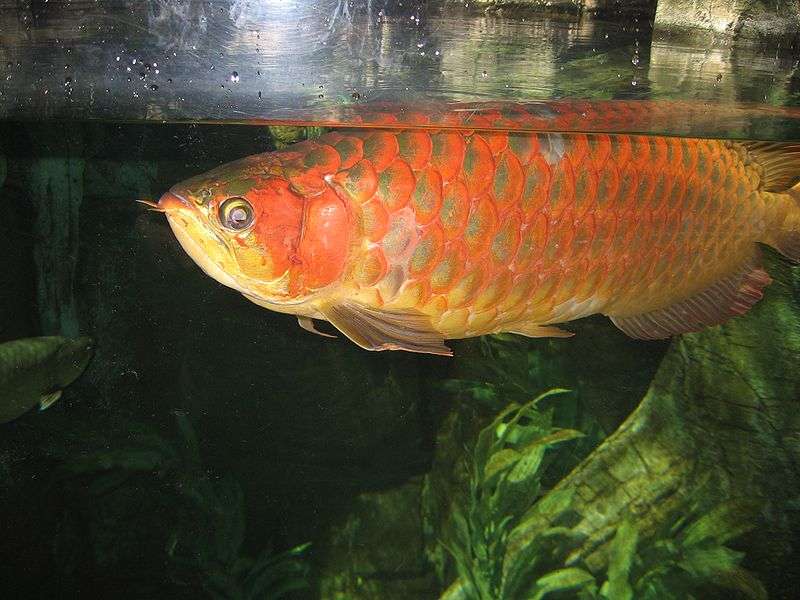
Size
90 cm
Physical Characteristics
The elongated body of this family of fish is coated in thick, heavy scales and has a mosaic pattern of canals. The skull is bony. The pectoral and ventral fins are tiny, whereas the dorsal and anal fins have soft rays and a lengthy base.
Temperament
Aggressive eaters, arowanas eat anything that will fit in their big mouths.
As they get older, some arowanas opt to go solitary
Habitat
Freshwater fish called arowanas can be found in ponds, lakes, and rivers throughout Asia, South America, and Australia. Moreover, they are present in flooded forests.
Keeping as Pet

- Tank Size
Put your arowana in a tank that is the right size for it because it is a surface-swimming fish, making the tank’s breadth and length more crucial than its height. A 150-gallon aquarium is the bare minimum advised for arowanas because of their speedy growth and enormous adult size, which will aid to maintain their health.
- Water Parameters
For keeping arowana, the ideal water characteristics are:
pH 6.5 to 7.5
10-20 DH water hardness
75-82°F for the water
These fish are extremely susceptible to changes in water quality and are hard on a bioload. The aquarium must be tested and maintained on a regular basis.
- Feeding
Since arowanas are carnivores, the following foods should be included in their diet:
Floating pellets made for predatory fish that feed on the surface
Fish and insects, including live, frozen, or freeze-dried krill, worms, and shrimp (avoid insects or invertebrates with sharp or very hard shells for juvenile arowanas)
When feeding your arowana, keep the following in mind:
These fish glide frequently just below the water’s surface and are surface feeders.
Give fish what they can consume in 1-2 minutes or less, feeding small fish 2-3 times per day and adults once per day.
Before feeding, thaw frozen foods.
- Tank mates
Arowana adults should be kept alone due to their size and needs. Most bottom dwellers, like large catfish species and plecostomus, are tolerated, but other aggressive fish may ruin your arowana’s long, flowing fins by nipping at them. If you house your arowana with tank mates, the other fish must be large enough so your arowana can’t swallow them whole, and they must not occupy the upper section of the tank, like pacu.
Table





